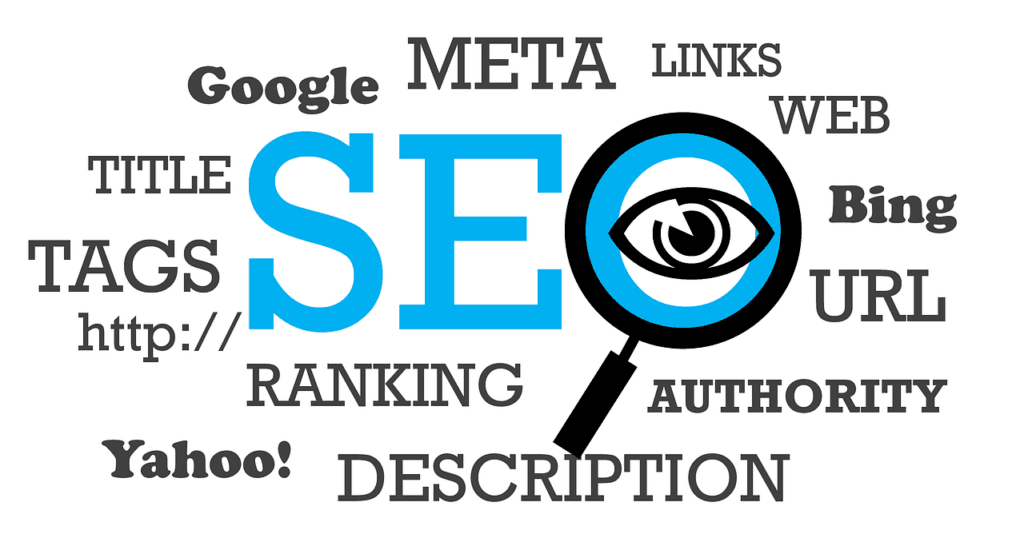Understanding Customer Base
Developing a strong customer base is vital for the success of any business. Understanding the significance of your customer base and implementing effective strategies for its growth can lead to enhanced profitability and sustainable operations.
Importance of Customer Base
A well-established customer base serves as the backbone of a successful business. It contributes to predictable revenue growth over time and minimizes the uncertainties often associated with customer acquisition. Customer retention is generally more cost-effective than attracting new clientele, as maintaining existing customers fosters loyalty and encourages repeat purchases, directly impacting profitability. Research indicates that companies with a customer retention rate of 90% experience considerable stability in their revenue streams (Outreach Resource).
Your ability to cultivate a loyal customer base means that you can rely on consistent sales figures, which ultimately allows for better financial forecasting and resource allocation. In addition, a loyal customer base often serves as brand advocates, further amplifying your marketing efforts through referrals and positive recommendations.
Strategies for Growing Customer Base
Implementing targeted strategies can greatly enhance the development of your customer base. Here are some effective approaches:
| Strategy | Description |
|---|---|
| Customer Segmentation | Tailor marketing efforts by segmenting customers based on demographics, behaviors, and preferences. This allows for more effective and personalized campaigns. For further insights, see customer demographics analysis. |
| Referral Programs | Leverage existing customers by encouraging them to refer new clients, often incentivized by rewards or discounts. Referral marketing is a cost-effective way to expand your audience. Explore more in customer acquisition tactics. |
| Enhancing Customer Experience | Invest in improving customer service and engagement. Happy customers are more likely to return and promote your brand. Consider customer relationship management strategies to enhance relationships. |
| Offering Value-Added Services | Provide services that complement your primary offerings. This can attract new customers looking for comprehensive solutions. Learn more about expanding market reach. |
| Marketing Efforts | Utilize multiple channels to promote your business and reach different audiences. Digital marketing strategies can particularly help in increasing brand’s customer base. |
By combining these strategies, you will be better equipped to enhance your customer base development and drive long-term growth. It is crucial to analyze the effectiveness of these methods continuously and adjust them to optimize results in line with your business goals.
Leveraging Referral Marketing
Power of Referral Marketing
Referral marketing is a critical tool in your strategies for customer base development. This approach leverages the power of satisfied customers who can act as brand advocates, introducing your business to new potential clients. Statistics indicate that referral marketing generates three to five times higher conversion rates than most other channels (Revnew).
Implementing a referral strategy not only reduces your customer acquisition costs but enhances trust and credibility in your brand. Word-of-mouth marketing is especially potent, with 92% of global consumers trusting referrals from friends, family, or acquaintances over traditional corporate advertising (Paddle). This principle demonstrates how turning customers into advocates can profoundly impact your growth and outreach efforts.
| Statistic | Value |
|---|---|
| Referral Marketing Conversion Rate | 3 – 5 times higher than most channels |
| Consumers Trusting Referrals | 92% |
Conversion Rates and Brand Advocates
A strong referral marketing program allows businesses to harness the existing relationships of their current clients, driving the acquisition of new customers at minimal cost. When customers are happy, they are more likely to share their positive experiences with others, providing your brand with organic promotion.
Additionally, customer testimonials can serve as powerful tools in your referral marketing strategy. Positive endorsements from previous clients not only build trust but also encourage prospects to choose your services over competitors (Rakuten).
To maximize the effectiveness of your referral marketing efforts, consider integrating various marketing channels, such as social media campaigns and email outreach, to encourage satisfied customers to share their experiences (WorldStream).
A well-executed referral marketing strategy can propel your business to new heights, opening new avenues for growth and customer engagement. Looking at successful brands that have effectively utilized this approach showcases how referrals can lead to substantial growth and customer base expansion (DriveReferrals).
In conclusion, implementing a robust referral marketing strategy is essential for optimizing your customer base growth and establishing long-term relationships with clients. Engaging existing customers to advocate for your brand can lead to a sustainable competitive advantage while enriching your overall marketing efforts. For additional insights on attracting new customers, explore our article on customer acquisition tactics.
Building Business Partnerships
Building strategic business partnerships can play a vital role in your efforts for customer base development. When executed effectively, these collaborations can enhance your market reach and drive new business opportunities.
Engaging in Complementary Partnerships
Engaging in complementary partnerships allows your business to align with other companies that offer products or services that complement your own. This alignment can create value for both parties, facilitating the sharing of resources, expertise, and customer networks. High-growth potential brands are recognized to be three times more likely to engage in these synergistic partnerships to generate new business for both parties (Revnew).
For example, a fitness equipment company may partner with a health food brand to offer bundled promotions or co-host events. Such partnerships not only provide added value to the customer but also expose your brand to a new audience.
| Type of Partnership | Example |
|---|---|
| Co-branding | Joint product advertising with a complementary brand |
| Affiliate marketing | Partnering with influencers or other businesses to promote products |
| Referral partnerships | Offering incentives for partners who refer customers |
Consider evaluating potential business partners through comprehensive customer demographics analysis to ensure alignment in target audiences.
Driving New Business Opportunities
Strategic partnerships can also create innovative avenues for revenue generation. By collaborating with other businesses, you can leverage shared marketing initiatives, tapping into established customer bases and enhancing your exposure. Data-driven insights from effective market research help in understanding customer preferences and expectations, allowing you to tailor your offerings accordingly (LinkedIn).
Additionally, free trials or samples can be effectively used in partnership promotions. This strategy significantly increases the likelihood of potential customers converting into paying customers as it allows them to experience the value of products or services without initial cost (Revnew).
In summary, focusing on engaging in complementary partnerships and seeking new business opportunities through strategic collaborations can elevate your brand’s visibility and make substantial contributions to your customer base development efforts. Emphasizing effective customer base growth strategies can further enhance the success of these partnerships.
Establishing Credibility on LinkedIn
LinkedIn is a powerful platform for business owners, CEOs, and marketing executives. By effectively utilizing LinkedIn, you can enhance your credibility, showcase your expertise, and ultimately contribute to your customer base development.
Showcasing Expertise
To establish yourself as an authority in your field, you must actively share your knowledge and insights on LinkedIn. This can be achieved through thoughtful posts, articles, and comments that reflect your understanding of industry trends and challenges. Promoting your expertise allows you to attract potential customers and connect with others in your industry (Revnew).
Consider the following strategies for showcasing your expertise:
| Strategy | Description |
|---|---|
| Thought Leadership Posts | Share original insights or analyses that reflect your knowledge. |
| Articles | Write long-form content on relevant industry topics. |
| Engagement | Regularly comment on posts from others in your industry to demonstrate your expertise. |
| Consistency | Post regularly to keep your audience engaged and informed. |
By employing these tactics, you are likely to see an increase in your visibility, potentially attracting new clients and opportunities.
Leveraging Industry Groups
Joining and actively participating in LinkedIn industry groups is another effective way to establish credibility. These groups provide a platform for networking, exchanging ideas, and learning from peers. Engaging in discussions and sharing resources within these groups can position you as a knowledgeable voice in your field.
Consider the following benefits of leveraging industry groups on LinkedIn:
| Benefit | Description |
|---|---|
| Networking Opportunities | Connect with industry professionals and potential customers. |
| Knowledge Sharing | Gain insights from peers and share your expertise. |
| Increased Visibility | Become recognized as an active participant and contributor within your industry. |
| Access to Resources | Find valuable tools and information shared by other group members. |
Using these strategies will allow you to strengthen your professional network and enhance your credibility on LinkedIn. This, in turn, can support your overall customer acquisition tactics and improve customer relationship management strategies customer relationship management strategies. Embrace the power of LinkedIn to foster your business growth and expand your customer base.
Offering Free Trials and Demos
Offering free trials and demos is an effective strategy that can significantly enhance your customer base development. By providing potential customers with a taste of your products or services, you create an opportunity to showcase their value and build initial trust.
Increasing Conversion Rates
The evidence clearly indicates that the availability of free trials and demos can lead to higher conversion rates. When customers are allowed to experience a product first-hand, they are more likely to make the decision to purchase. According to industry insights, businesses that implement these offerings see an increase in conversion rates, capitalizing on this approach to turn interested leads into paying customers.
A table below summarizes the average conversion rate increase associated with various strategies, including free trials:
| Strategy | Average Conversion Rate Increase (%) |
|---|---|
| Free Trials/Demos | 20 – 30 |
| Personalized Email Campaigns | 15 – 20 |
| Targeted Ads | 10 – 15 |
Adopting free trials and demos as part of your marketing strategy not only prompts initial engagement but also helps in the long-term retention of customers. Increased retention rates offer a higher return on investment (ROI) on your advertising spend, sometimes yielding profits that multiply for every incremental percentage rise in retention.
Demonstrating Value
Demonstrating value through free trials and demos facilitates a clearer understanding of how your offerings address specific customer needs. Through experiential marketing, potential customers can witness the benefits of your products, which enhances their likelihood of conversion. This method is particularly impactful when you emphasize customer segmentation to tailor the trial experience according to customer demographics.
Additionally, collecting feedback during and after the trial or demo can yield crucial insights. Engaging with customers to understand their experience can lead to enhancements in both product features and service delivery. Implementing this feedback loop not only allows for optimization based on conducting surveys like the Net Promoter Score (NPS) but also reinforces customer relationships, ultimately contributing to customer loyalty.
Integrating free trials and demos into your customer acquisition tactics enables you to effectively showcase your offerings while building a solid foundation for converting leads into loyal customers. This strategy aligns with your broader customer relationship management strategies and is essential for improving customer loyalty.
Harnessing the Power of Retargeting Ads
Retargeting ads are critical in your marketing toolkit, especially when it comes to customer base development. By directing tailored ads to individuals who have previously engaged with your brand, you can effectively rekindle their interest and drive conversions.
Re-engaging Interested Prospects
Retargeting ads work by utilizing tracking pixels or cookies to identify potential customers who have shown interest in your products or services but did not complete a purchase. These ads serve as reminders, keeping your offerings at the forefront of their minds. According to Revnew, this strategy can significantly increase your chances of conversion as you re-engage prospects who have already expressed interest.
The ability to craft personalized ads based on previous interactions can lead to higher engagement rates compared to generic advertising campaigns. Below is a summary of the effectiveness of retargeting ads:
| Metric | Stat/Effect |
|---|---|
| Return on Ad Spend (ROAS) | 10x higher than standard ads |
| Increased site visits | 300% higher after retargeting |
| Higher engagement rate | 5 to 10 times more engaging |
Boosting Conversions
The true power of retargeting lies in its ability to boost conversion rates. Studies show that a mere 5% increase in retention rates can lead to profit increases of up to 95% (Paddle). This highlights the critical importance of not only acquiring new customers but also ensuring ongoing engagement with past prospects.
Retargeting ads not only enhance retention but also reduce the cost of acquiring new customers. Onboarding a new customer can be 5 to 25 times more expensive than maintaining an existing one (Delighted). By consistently reminding your target audience about your brand, you increase the likelihood that they will convert, thus contributing to a growing and stable customer base.
In conclusion, leveraging retargeting ads is an essential strategy for any business looking to expand and solidify its customer base. Consider integrating retargeting into your broader marketing strategy to maximize your efforts on customer acquisition tactics and customer retention methods.
Customer Segmentation Strategies
Customer segmentation is crucial for your organization to optimize sales and marketing efforts while enhancing customer experiences. By categorizing your customer base into distinct groups based on shared qualities, you can tailor your strategies to meet the specific needs of each segment.
Optimizing Sales and Marketing Efforts
Segmentation allows you to identify common attributes among your customers, enabling you to focus your business growth strategies effectively. This targeted approach enhances the efficiency of your marketing campaigns, ultimately driving better results. As noted by Amplitude, implementing a customer segmentation strategy enables organizations to drive personalization in marketing, leading to a more tailored customer experience.
Key Benefits of Segmentation in Sales and Marketing
| Benefit | Description |
|---|---|
| Personalized Marketing | Tailoring messages and offers to specific segments leads to higher engagement rates. |
| Improved Resource Allocation | Optimize marketing budgets by directing efforts towards high-value segments. |
| Enhanced Cross-Functional Collaboration | Align sales and marketing strategies for a seamless customer experience. |
Understanding customer journeys through segmentation also helps in designing better products, ensuring that offerings meet the specific desires of different groups. When you focus on high-value customers, who typically spend significantly more than others, you can drive loyalty and enhance relationships, increasing potential revenue CSG Solutions.
Improving Customer Experiences
Effective customer segmentation enhances the overall customer experience by allowing you to provide personalized attention. As mentioned by Amplitude, improved personalization efforts contribute significantly to customer loyalty and retention. By understanding the preferences and behaviors of different segments, you can tailor your interactions accordingly.
Strategies for Enhancing Customer Experiences
| Strategy | Description |
|---|---|
| Tailored Communication | Create specific messages that resonate with the interests of each customer group. |
| Customized Offers | Provide discounts or promotions that cater to the preferences of targeted segments. |
| Feedback Loops | Actively solicit feedback from segmented groups to continuously refine your offerings. |
Utilizing market segmentation data analysis assists in identifying high-value customers, who are likely to represent a significant portion of your total revenue. By focusing on these relationships, you can enhance your engagement strategies and drive long-term loyalty. Companies prioritizing personalized messaging based on segmentation are more apt to succeed in retaining their customers, as highlighted in CSG Solutions.
Incorporating effective segmentation strategies into your business practices not only optimizes your sales and marketing efforts but also significantly improves the experience your customers have with your brand. This dual focus is essential for realizing the full potential of your customer base development initiatives. For additional insights into expanding your reach and acquiring new customers, explore our resources on customer acquisition tactics and attracting new customers.
Personalization Through Customer Segmentation
Customer segmentation is a powerful strategy that can significantly enhance your personalization efforts. By dividing your customer base into distinct segments based on various criteria, you can tailor your marketing initiatives, product offerings, and customer interactions to meet the specific needs of each group.
Driving Personalization Efforts
Implementing a customer segmentation strategy enables you to drive personalization in your marketing efforts effectively. Personalization involves creating unique experiences for your customers based on their preferences, behaviors, and demographics. This tailored approach can lead to higher engagement rates and improved customer satisfaction.
The following table illustrates how different segmentation criteria can impact your marketing strategies:
| Segmentation Criteria | Example of Tailored Marketing Approach |
|---|---|
| Demographics | Target messages based on age group, gender, or income level. |
| Behavioral Data | Offer discounts based on previous purchase behavior. |
| Geographic Location | Customize campaigns for local events or trends. |
| Psychographics | Align marketing messages with lifestyle and interests. |
By utilizing segmentation, you can enhance the relevance of your marketing communications and streamline your customer relationship management strategies. For more insights on how to grow your customer base, explore our article on customer acquisition tactics.
Enhancing Customer Loyalty
Customer loyalty is closely linked to effective personalization. When customers receive tailored experiences that meet their expectations, they are more likely to remain loyal to your brand. Personalized experiences not only make customers feel valued but also encourage repeat purchases.
Research indicates that organizations that align their sales and marketing initiatives through customer segmentation tend to see a noticeable increase in customer loyalty and overall revenue growth (Amplitude).
To maximize customer loyalty, consider implementing the following strategies:
- Personalized Communication: Use segmentation data to craft personalized emails, newsletters, and promotions targeting specific groups.
- Tailored Product Recommendations: Suggest products based on the preferences of different customer segments.
- Targeted Loyalty Programs: Design loyalty programs that cater to the unique needs and interests of various segments.
For further reading on enhancing loyalty, consider our resource on improving customer loyalty.
Utilizing customer segmentation allows you to optimize your marketing strategies and ultimately support your goals of customer base development and growth. For additional insights into expanding your market reach or understanding customer demographics, visit our articles on expanding market reach and customer demographics analysis.
Maximizing Revenue with Segmentation
Revenue Growth Strategies
To enhance your revenue growth strategies, implementing customer segmentation is paramount. By identifying the common attributes of your customers, you can group them into specific segments that allow for targeted marketing and product optimization. This tailored approach not only streamlines your sales and marketing efforts but significantly enhances the customer experience as well. According to Amplitude, a well-executed segmentation strategy can lead to stronger conversion rates by ensuring that your messaging resonates with the right audience.
Utilizing segmentation also enables you to optimize pricing strategies and allocate your budget more effectively. By adjusting your marketing strategies based on the distinct needs of each segment, you can ensure that your offerings are appealing and relevant, ultimately driving revenue growth. The table below illustrates various customer segmentation strategies along with their potential impact on revenue growth.
| Segmentation Strategy | Potential Impact on Revenue Growth |
|---|---|
| Demographic Segmentation | Targets specific age and income brackets |
| Behavioral Segmentation | Focuses on purchasing habits and preferences |
| Geographic Segmentation | Engages customers based on location |
| Psychographic Segmentation | Offers products based on lifestyle and values |
Data-Backed Decision Making
Effective decision-making is critical in maximizing your revenue, and utilizing data is a crucial part of this process. By implementing a customer segmentation strategy, you are empowered to make data-driven decisions that align with your market’s preferences. Analyzing customer data enables businesses to connect more effectively with their customers and fine-tune their marketing efforts to meet specific needs.
Furthermore, employing advanced analytics techniques, such as machine learning, can help you analyze customer data based on numerous characteristics. This will deepen your understanding of customer relationships beyond traditional segmentation methods, thereby enhancing your marketing initiatives and ensuring higher retention levels (CSG Solutions). By embracing these data-backed approaches, you can improve your offerings and experiences, thus leading to greater customer loyalty and sustained revenue growth.
To further explore effective strategies for customer acquisition tactics, enhance your customer relationship management strategies, or dive deeper into customer demographics analysis for better insights, consider how each aspect can contribute to comprehensive customer base development.





















